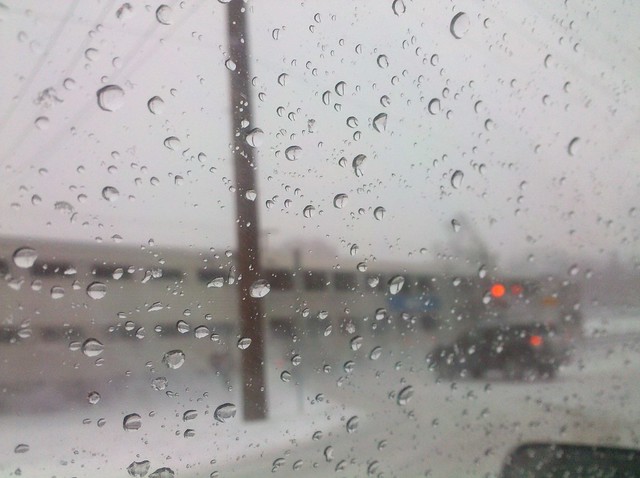by Kirsty Morgan
When I first found out about ‘mindfulness’, or more importantly my lack of it, it was a few years ago on the back of some management training. At the time I had recently had a promotion and was working part-time, juggling parenting and working (along with all the other obligations that life throws at us). I was rarely truly present.
I worked part-time to be with my children. Yet, I was often only there physically because, mentally, I was somewhere else (usually work). Frequently I wouldn’t be listening to them telling me tales of their day because I was still going over that deadline.
I knew I was distracted, so when I found out how I lacked mindfulness, I was determined to improve. I’ve since done various courses, including the 8 week Mindfulness Based Stress Reduction course with Annika Wager , read lots of books and more importantly practiced meditating every day.
It’s the best thing I’ve ever done.
So, what is mindfulness?
We are often lost in thought and not aware of this moment. Mindfulness is a way of being aware of the present moment and accepting it, however it is.
This doesn’t always mean being happy – sometimes the present moment is hard. Noticing our life as it is isn’t always joyful. Mindfulness isn’t about being happy all the time but about being here, fully, for whatever is happening. The ‘non-judgemental’ part of the practice helps me to repeatedly be open to whatever I’m feeling and not be critical of myself for it. An example is that I can get quite anxious about things. In the past I felt like I should have it together and would feel bad about feeling anxious. Now I am able to notice the anxiety and be curious about it, discovering where I feel it the most in my body (I have a tendency to clench my jaw and I feel a tightness in my chest, which can be mildly painful). Being aware of my emotions and how they feel in my body is often the first signal I have that I’m reacting badly to something.
 Through practicing noticing whatever is here I’ve learnt to pick my battles. Some things that I’m experiencing are hard but there could be another way of viewing it and it’s sometimes not as bad as I think. Other times I notice that my anxiety or anger is completely justified. There’s a legitimate reason for me feeling the way I do and I’m able to look at what my options are in a more calm way. Many say that mindfulness helps you to respond rather than react and I have noticed this tenfold. I’m certain it’s saved me from some arguments over the years with various people.
Through practicing noticing whatever is here I’ve learnt to pick my battles. Some things that I’m experiencing are hard but there could be another way of viewing it and it’s sometimes not as bad as I think. Other times I notice that my anxiety or anger is completely justified. There’s a legitimate reason for me feeling the way I do and I’m able to look at what my options are in a more calm way. Many say that mindfulness helps you to respond rather than react and I have noticed this tenfold. I’m certain it’s saved me from some arguments over the years with various people.
Even though the purpose of mindfulness isn’t to feel happy all the time, since practicing I’ve noticed more happy moments. Days which I might have written off as awful in the past, weren’t so awful. I’ve been more present for the sun on my skin, flowers in the garden and most importantly listening to my children.
How do you practice?
Practicing mindfulness involves meditating. This does not mean emptying your mind – that’s impossible!
Basically mindfulness meditation involves focussing on a particular ‘anchor’, such as your breath, your body or even sounds. When you notice you’ve been pulled into another thought you practice being pleased that you noticed (after all, simply noticing that is awareness – another word for mindfulness) and you return to focus on your anchor (this cycle will continue over and over in any mediation sitting, you simply begin again).
Studies have shown that this meditation practice changes your brain, increasing activity in the parts responsible for concentration and empathy while reducing the areas responsible for stress and anxiety.
Practicing helps you be more focussed and present throughout your day as well as having more meaningful relationships. It’s the most worthwhile 20 minutes of my day!
How has it impacted my life?
Presentations
I used to have the thought ‘I can’t do a presentation’. It’s something that I felt was limiting my career (as well as my self-esteem) and I had refused to do them in the past, even when asked by those more senior than me at work. Mindfulness helped me to notice that ‘I can’t do a presentation’ was just a thought and to accept my nerves as just another feeling in my body. This took the edge off it. I didn’t have to be scared.
I have now done presentations, spoken at the NHF Young Leader Conference and ran group sessions on mindfulness. It’s helped me to feel braver, more confident and happier.
All time is me time!
I used to have a list of things to do, after which I’d get to relax and have some ‘me time’. Of course, the list never ends, as everyone knows. Mindfulness has taught me that all of the time I’m ‘doing’ something is my time. I don’t rush the washing up or the cleaning, I don’t get impatient driving to work and, when I first started practicing, I stopped rushing the children’s bedtime stories so I could get downstairs for ‘me time’. Instead, I think that this is my life, right now – wherever I am.
The biggest difference initially was that I enjoyed the bedtime stories so much more. It pains me to say it now because they were such a precious time for me to be with my children and they’re older now and beyond the bedtime stories phase. If nothing more, I’ll forever be grateful that I started practicing mindfulness purely because I had a good few years of enjoying reading the stories and answering all of the questions that my children asked me to!
I also now notice the cup I am washing. I enjoy the music I’m singing along to in the car. Of course sometimes I forget, get lost in thought and start feeling rushed and impatient. Only now I notice that this has happened, I bring myself to the present moment and I begin again…and again…and again.
Taming my perfectionist nature
 There is always more to do if you always try to do everything perfectly and if you think that you can’t stop until you get to the end of your list (when you will finally stop and be happy). My list of things to do at home and work is never ending and always has been. Learning and practicing mindfulness has helped me to notice my striving, my discomfort when I am not ‘doing’ and then also, my comfort when the initial urge to keep ‘doing’ has passed. My mindfulness teacher, Annika Wager, taught me to ‘surf the urge’! Instead of having to reply instantly to a message or to share a photo on social media or to log on to work ‘just in case’ I have an email that needs my urgent attention, I now sit with noticing how the feeling of desire to respond, or the feeling of panic etc feels in my body. I simply notice that. I am now aware of the choice that I have in that next moment – do I want to act as I usually do, or do I want to behave differently? Who do I want to be? It takes a lot of courage to choose a different behaviour or action and I don’t always. Sometimes the anxiety, especially around work, is too great but I’m getting better. I know who I want to be and how I want to live my life and I’m taking each day as it comes in moving forward the way I want to.
There is always more to do if you always try to do everything perfectly and if you think that you can’t stop until you get to the end of your list (when you will finally stop and be happy). My list of things to do at home and work is never ending and always has been. Learning and practicing mindfulness has helped me to notice my striving, my discomfort when I am not ‘doing’ and then also, my comfort when the initial urge to keep ‘doing’ has passed. My mindfulness teacher, Annika Wager, taught me to ‘surf the urge’! Instead of having to reply instantly to a message or to share a photo on social media or to log on to work ‘just in case’ I have an email that needs my urgent attention, I now sit with noticing how the feeling of desire to respond, or the feeling of panic etc feels in my body. I simply notice that. I am now aware of the choice that I have in that next moment – do I want to act as I usually do, or do I want to behave differently? Who do I want to be? It takes a lot of courage to choose a different behaviour or action and I don’t always. Sometimes the anxiety, especially around work, is too great but I’m getting better. I know who I want to be and how I want to live my life and I’m taking each day as it comes in moving forward the way I want to.
If you want to find out more about me then please see my website www.moremindfulme.tumblr.com or follow me on twitter @KirstyBeMindful
Latest posts by Admin (see all)
- The Necessity of Mindfulness: Seeing Things as They Really Are - October 6, 2021
- How Mindfulness Saved My Life - August 8, 2021
- Mindfulness: A Bird’s-Eye View - July 11, 2021
